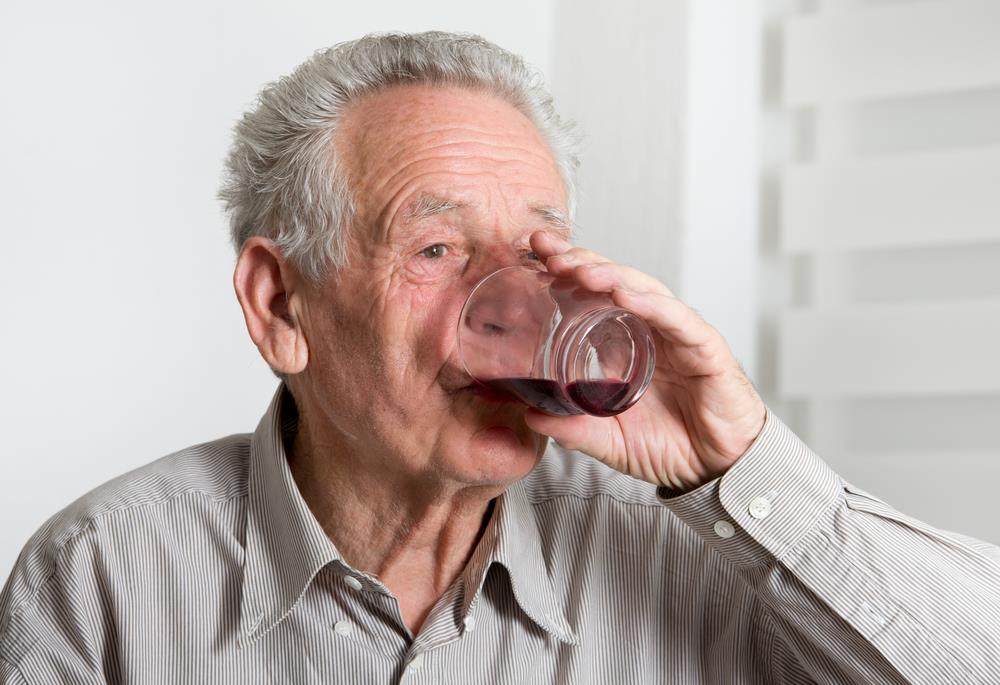Mental Wellness
The New Face of Addiction: GERIATRIC ADDICTION
Jackie is a 68-year old retired school teacher who was faced with losing her husband suddenly to an unforeseen massive stroke. As a married couple of 42 years, they were in the midst of planning their retirement life together, filled with travel and relaxation. Jackie was now alone in a home that espoused all the years of memories. She was finding it very challenging to cope, and especially to sleep at night. A neighbour, meaning well, recommended she try a “hot toddy” (whiskey mixed with hot water and honey) before bed. Jackie found this helpful for sleeping and thus began to have one nightly. She soon found she could use one earlier on as well and one upon awakening. Within 8 months Jackie’s daily routine consisted of a trip to the liquor store and passing out by 5pm. Found one day by her daughter who was concerned about her mom not answering the phone, Jackie was admitted to hospital and then into a residential treatment facility to treat her alcohol use disorder. Before her husband’s death, Jackie could count the few times she had an alcoholic beverage – one being her wedding day.
Sobering Statistics
Jackie’s story is not uncommon, in fact it is representative of the growing face of addiction. North America is experiencing a rapidly aging population. For the first time ever, there are now more people in Canada age 65 and over than there are under age 15 (Statistics Canada, 2015). The bulk of these are the ‘baby boomers’, or those born after World War II between 1946 and 1964. Nearly one in six Canadians (16.1%) is at least 65 years old. According to recent projections, this group will continue to increase and account for 20% of the population by 2024. By 2036, one in four people will be at least age 65.
There are over 2.5 million older adults in the U.S. with an alcohol or drug problem. It attributes to 14% percent of elderly emergency room admissions and 20% of elderly psychiatric admissions. Older adults are hospitalized as often for alcoholic related problems as they are for heart attacks (NCADD, 2016). At Bellwood Heath Services, a leading residential addiction treatment facility located in Toronto, Canada, the rate of client admissions over the age of 50 increased from 21% in 2006 to 30% in 2016. Approximately one in every three people in treatment today there is over the age of 50, and the number continues to rise. These realities will pose a significant impact on demands of the health care system as well as service providers.
But, Why Now?
There are a variety of reasons why elderly people may turn to alcohol and drugs later in life. Age related burdens such as physical pain, retirement and lack of daily structure, social losses and isolation, grief, changes in living situation or financial losses are among the most common (Crossman, Schermbaum & Bennet, 2015).
Dr. Mark Weiss, MD, Medical Director at Bellwood Health Services adds, “Two big triggers I have seen are retirement and loss of a spouse.” He adds that for older women in particular, when the children leave home there is a definite emptiness. “For a mother, that is like retirement.”
As in our client Jackie’s case, grief following her husband’s sudden passing manifested in sadness, sleep issues and social isolation and finally alcohol as a coping mechanism and addiction. Due to retirement and living alone, one of the most telling DSM V symptoms to meet the criteria for alcohol dependence, “failure to fulfill major role obligations at work, school or home” is not even applicable to Jackie or to many other older adults. Thus many of those in retirement follow Jackie’s path, as with a lack of daily structure and accountability, substance and alcohol abuse can linger undetected and progress into dependency and addiction.
Early Vs. Late Onset
There are said to be two types of older substance abusers: Early Onset, or those who are 65 years of age or older and have abused alcohol and drugs for many years – sometimes referred to as ‘hardy survivors’, and Late Onset substance and alcohol abusers who began the behaviour later in life. Dr. Weiss discusses, “In my experience with the older groups, there tends to be a precipitating event…when one can address that, there tends to be a better prognosis… Someone dies, but this person has a demonstrated ability to stay sober for many years… Usually these are people who’ve had skills and often have supports. They have the resources, and if you can re-direct that, I find they get better.”
There are more challenges with the early onset subtype, as years of abuse have now resulted in a higher incidence of psychiatric and physical problems than their early onset counterparts. According to Dr. Weiss, co-occurring age related issues such as dementia and memory loss may cause more disinhibition and thus more anxiety about their inability to function, which prompts more drinking. It is estimated that early-onset substance abusers make up two thirds of the geriatric alcoholic population (Bogunovic, 2012).
Treatment
Counselling or treatment should begin with a conversation about the client’s daily life, examining their feelings and thoughts, and examining the role of the alcohol or substance in the person’s life as a whole. A full life history is a recommended first step, thus allowing both the client and clinician to initiate use of substances in a non-threatening way. Physical and psychological conditions will also be identified in the discussion. The National Initiative for the care of the Elderly (NICE) recommends setting client-centred goals such as quality of life improvement and focusing on what can make life better, more comfortable and happier, not solely the substance use. Health Canada (2002) states best practices for treatment of high-need older adults includes:
-a holistic problem solving approach
-intensive case management
-social and recreational programs
-home visiting known as “outreach”.
Group therapy seems to be a very beneficial part of an older person’s treatment and continuing care. It not only allows for a beneficial therapeutic alliance to take place, but brings in an extra social outlet and responsibility. Intimate and mutual bonds are formed between clients and the group allows a platform for clinicians to employ various trans-theoretical models in the therapeutic process.
Generally, most groups are made up of a variety of ages and genders. When asked if he would prefer being in an age-cohort group of elders in recovery, one client replied that he found the variety of ages of the group members provided him with a more enriching experience in recovery. He looked forward to coming to group every week not only for himself, but to see how the others were progressing in their lives. Dr. Weiss comments “I find a lot of the people in their 30’s and 40’s have a lot of empathy and they really rally around the older person. It’s very helpful. They tend to adopt them.” He adds that he finds the older clients tend to employ a positive attitude toward recovery and generally fare much better in treatment than youth of 19 or 20 years of age.
Why Underdiagnosed?
Many of the effects of substance abuse mirror other typically elderly related conditions. Older adults with some degree of cognitive or physical impairment are often misdiagnosed as the symptoms mimic depression, diabetes or dementia, when there may be an undetected substance addiction or even misuse (NICE). Quick office visits also result in clinicians often overlooking any alcohol or substance issue. Many times family as well as doctors attribute symptoms to “normal aging” when some deeper inquiry may uncover a drinking or pill problem. And in many instances, the older adult themselves may not even be aware of certain drug-to-drug or drug-alcohol interaction. They may be drinking the same 3 glasses of wine per day that they used to at age 40, yet due to the increased sensitivity to alcohol and decreased tolerance that occurs with age, unexpected and physical and psychological effects are the result.
The facts remain that Inadequate screening due to either lack of training or the possible bias that addiction and alcoholism are not applicable or not “treatable” in the elderly does still exist. Even family members’ attitudes may reflect this. Sufferers themselves may be reluctant to seek help for what this age cohort may deem to be “a private issue”. Stigma and shame from both sufferers and family members may be even more entrenched with this age group as addiction is typically associated with youth, (i.e.“ you should know better at this age”). Finally, there is an unspoken assumption that unfortunately at times, pervades society as well as health care – that it’s not worth treating elders for addiction issues. On all accounts, from my experience as a clinician in the field and in doing this report, the older clients in treatment have shown much commitment and willingness to do what it takes to live a healthy and sober life. And these are the keys to success in recovery.
Elderly Addiction – What to Look For
*Secretive behaviour
*Loss of interest in activities once enjoyed
*Falls and unexplained bruises
*Memory problems
*Irritability if alcohol or drug use questions arise
*Neglect of personal grooming and hygiene
*Irrational behaviour
*Loss of appetite
*Withdrawal symptoms such as early morning shakes
Elderly at High Risk for Addiction
*Male
*Separated or Divorced
*Suffered loss/bereavement
*Financial hardship
*Abused alcohol and/or substances when younger



